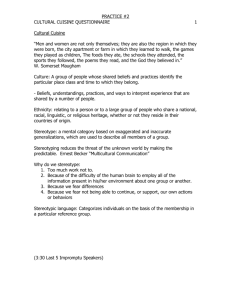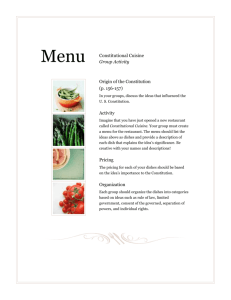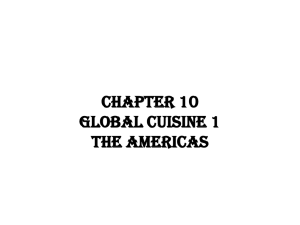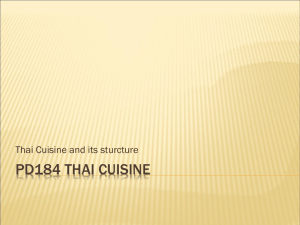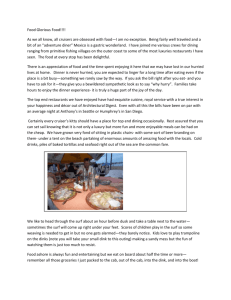French Culinary History
advertisement
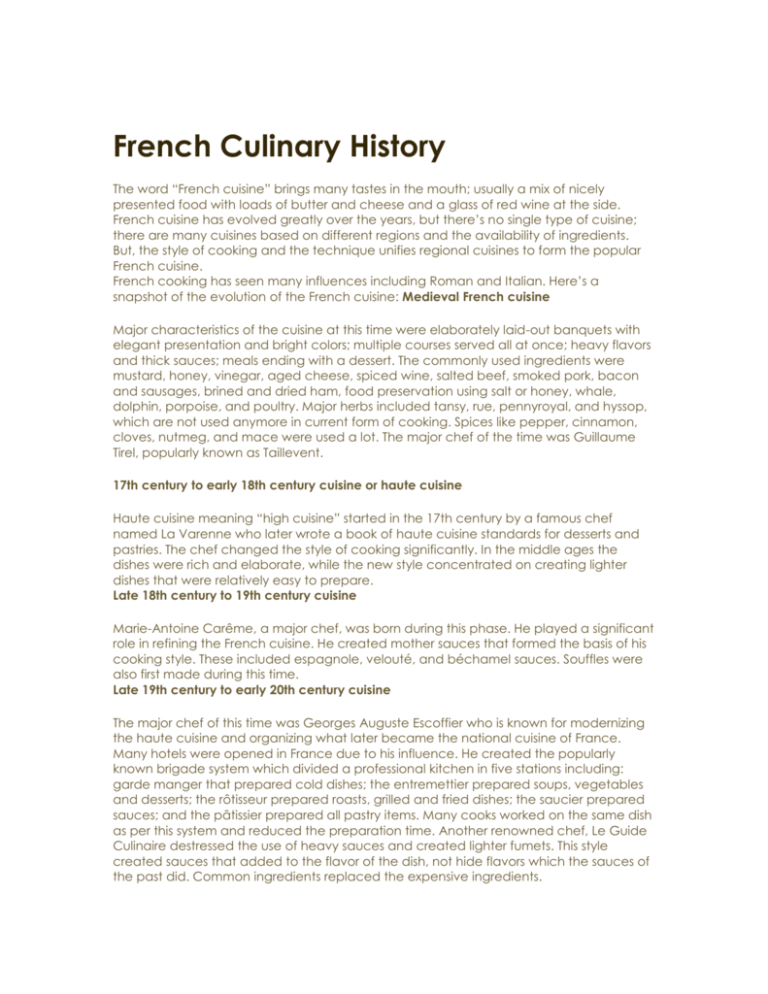
French Culinary History The word “French cuisine” brings many tastes in the mouth; usually a mix of nicely presented food with loads of butter and cheese and a glass of red wine at the side. French cuisine has evolved greatly over the years, but there’s no single type of cuisine; there are many cuisines based on different regions and the availability of ingredients. But, the style of cooking and the technique unifies regional cuisines to form the popular French cuisine. French cooking has seen many influences including Roman and Italian. Here’s a snapshot of the evolution of the French cuisine: Medieval French cuisine Major characteristics of the cuisine at this time were elaborately laid-out banquets with elegant presentation and bright colors; multiple courses served all at once; heavy flavors and thick sauces; meals ending with a dessert. The commonly used ingredients were mustard, honey, vinegar, aged cheese, spiced wine, salted beef, smoked pork, bacon and sausages, brined and dried ham, food preservation using salt or honey, whale, dolphin, porpoise, and poultry. Major herbs included tansy, rue, pennyroyal, and hyssop, which are not used anymore in current form of cooking. Spices like pepper, cinnamon, cloves, nutmeg, and mace were used a lot. The major chef of the time was Guillaume Tirel, popularly known as Taillevent. 17th century to early 18th century cuisine or haute cuisine Haute cuisine meaning “high cuisine” started in the 17th century by a famous chef named La Varenne who later wrote a book of haute cuisine standards for desserts and pastries. The chef changed the style of cooking significantly. In the middle ages the dishes were rich and elaborate, while the new style concentrated on creating lighter dishes that were relatively easy to prepare. Late 18th century to 19th century cuisine Marie-Antoine Carême, a major chef, was born during this phase. He played a significant role in refining the French cuisine. He created mother sauces that formed the basis of his cooking style. These included espagnole, velouté, and béchamel sauces. Souffles were also first made during this time. Late 19th century to early 20th century cuisine The major chef of this time was Georges Auguste Escoffier who is known for modernizing the haute cuisine and organizing what later became the national cuisine of France. Many hotels were opened in France due to his influence. He created the popularly known brigade system which divided a professional kitchen in five stations including: garde manger that prepared cold dishes; the entremettier prepared soups, vegetables and desserts; the rôtisseur prepared roasts, grilled and fried dishes; the saucier prepared sauces; and the pâtissier prepared all pastry items. Many cooks worked on the same dish as per this system and reduced the preparation time. Another renowned chef, Le Guide Culinaire destressed the use of heavy sauces and created lighter fumets. This style created sauces that added to the flavor of the dish, not hide flavors which the sauces of the past did. Common ingredients replaced the expensive ingredients. Mid 20th century to late 20th century cuisine Chefs like Paul Bocuse, Jean and Pierre Troisgros, Michel Guérard, Roger Vergé and Raymond Oliver rebelled against the “orthodoxy” of Escoffier’s cuisine. Gault and Millau “discovered the formula” contained in ten characteristics of this nouvelle cuisine; these included: 1. 2. 3. 4. 5. 6. Rejection of excessive complication in cooking Reducing the cooking times to preserve the natural flavors. Steaming was used Using freshest possible ingredients in cooking Large menus were abandoned in favor of shorter menus Strong marinades for meat and game ceased to be used Stopping the use of heavy sauces in favor of seasoning dishes with fresh herbs, quality butter, lemon juice, and vinegar 7. Use of regional dishes for inspiration instead of haute cuisine dishes 8. New techniques were embraced and modern equipment was often used 9. The chefs paid close attention to the dietary needs of their guests through their dishes 10. The chefs were extremely inventive and created new combinations and pairings Provincial- country cooking or cuisine paysanne, French home cooking. Recipes are simply prepared and meals are seasoned with sage tarragon, rosemary. Stews, roast chicken, seasonal vegetables and mixed greens are common. Bread, cheeses and fruits are served at the end of the meal. 3 types of cuisine: describe each Cuisine Paysanne -Provincial Haute cuisine- High Cuisine Nouvelle cuisine-New
